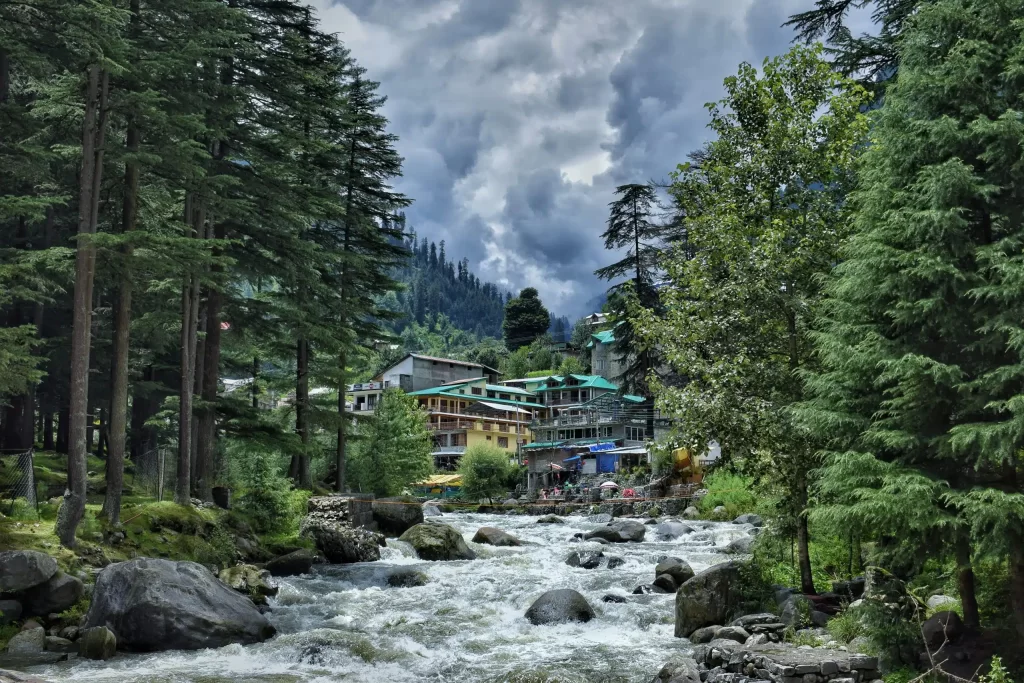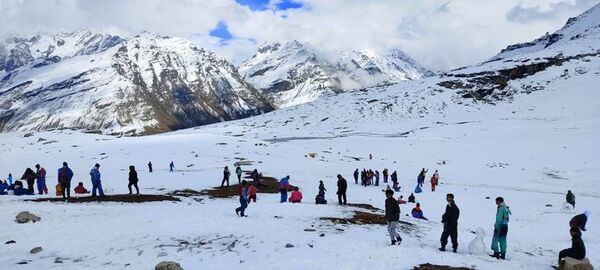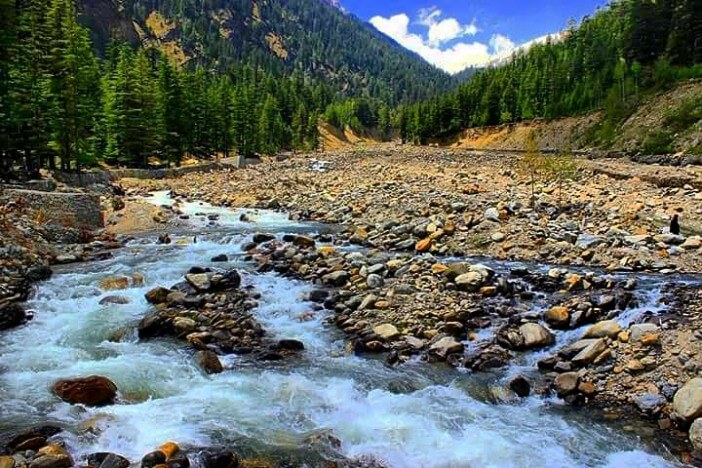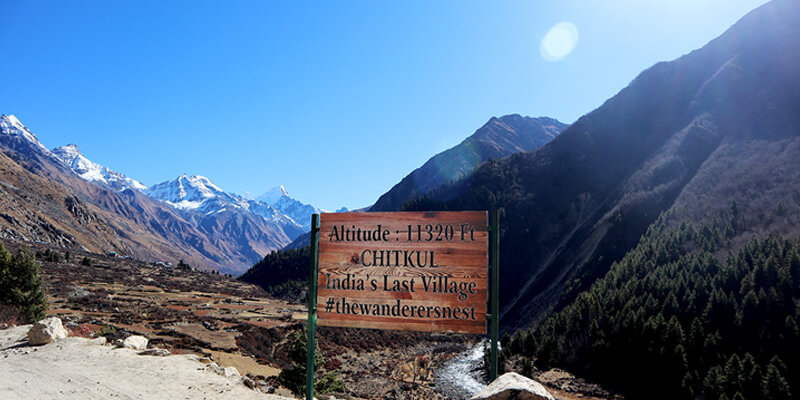MANALI (1956 ) Last Updated: June 11, 2024

Manali in Himachal Pradesh is now a very popular destination. Around 1956 we set out to go there all prepared with maps.
From Delhi, we reached Chandigad and stayed for a couple of days – a new city established to serve as the capital for both Haryana and Punjab.Famous French architect La Corbusier designed it. It was divided into sectors. We also visited the Bhakhra dam.
From here we were to drive to Manali. In Chandigarh, we were told that after the construction of the famous Bhakhra and Nangal dams the road we had charted out was closed. This led to an overnight journey via Mandi to Manali. On the way close to Chandigarh there is Pinjore garden developed in the 17th century in Mugal style as a summer retreat for Aurangzeb. The Patiala Dynasty Sikh rulers have now renovated it.
We stayed one night in Mandi. We visited a local rock garden developed by a collector who was interested in gardening
Next day we reached Manali. We had made a booking to stay at the government guesthouse for 3 nights. Due to early snowfall, we could barely go around. The most important outing to go to Rhatang Pass was impossible.
Nearby John Bannon’s hotel was fully occupied by European tourists. This was our first experience of seeing snow all over the ground. There was no electrical heating, so at night our driver used to put a big chunk of wood, which slowly burnt and kept us warm through the night.
Our second room was not available because there were guests who were forced to overstay because of snowfall. They were also from Bombay. We became friends. They used to invite us for a warm morning breakfast of baked beans and coffee. My mom used to cook delicious khichadi that we shared with them in the evenings.
On the third day, it was important for my father to leave to attend a meeting in Nainital. The road between Manali and Kullu was blocked due to a landslide. So an arrangement was made that we get off our car at this end and walk around the roadblock and get into another vehicle on the other side.
My mom of course bought a Kullu shawl that I still have with me. And we finally reached Nainital. It must have been very cold when we crossed the roadblock and I don’t remember how we managed.
After that I went to Manali several times. While in Delhi for World Congress of Pediatrics I again went there with my husband and daughter in month of October. It being Diwali festival the village was decorated with small lamps. We stayed at famous John Bannon’s hotel. Our old friends with whom we shared our stay earlier in Government bungalow were staying there permanently.

On our last visit we couldn’t go for a drive to Rhatang pass because of early snowfall. So this time we went there with a bus load of tourists. Many Bengali tourists were there in the bus. And than we saw our famous film producer Satyajit Ray sitting on the front seat.
VISIT – 3
This time we were travelling with a different group of friends who had charted the itinerary.
Shoja
- Location: Shoja is a small village situated in the Seraj Valley, at an elevation of about 2,700 meters.
- Attractions: Shoja is known for its tranquil environment and breathtaking views of the Himalayan ranges. Key attractions include:
- Jalori Pass: A high mountain pass providing stunning panoramic views.
- Serolsar Lake: A serene lake located a few kilometers trek from Jalori Pass.
- Raghupur Fort: An ancient fort with historical significance and scenic views.
Sangla
Chitkul

- Location: Sangla Valley, also known as Baspa Valley, is located in the Kinnaur district, at an elevation of around 2,700 meters.
- Attractions: Sangla is famous for its lush green landscapes and apple orchards. Key attractions include:
- Kamru Fort: An ancient fort with a rich history and beautiful architecture.
- Bering Nag Temple: A temple dedicated to Lord Jagas, visited during the Fulaich Fair.
- Baspa River: Ideal for nature walks, picnics, and angling.

- Location: Chitkul is the last inhabited village near the Indo-Tibetan border, situated in the Kinnaur district at an altitude of 3,450 meters.
- Attractions: This picturesque village is renowned for its natural beauty and unique charm. Highlights include:
- Baspa River: Flowing alongside the village, offering opportunities for trout fishing and riverside picnics.
- Chitkul Mata Temple: A local deity’s temple with traditional architecture.
- Kagyupa Temple: Known for its vibrant Buddhist prayer wheels and serene environment.
Chhota Kailash (Kinnaur Kailash)
- Location: The Kinnaur Kailash range is located in the Kinnaur district, with the peak standing at an elevation of about 6,050 meters.
- Attractions: This area is significant both spiritually and naturally. Highlights include:
- Kinnaur Kailash Shivling: A 79-foot vertical rock formation resembling a Shiva Lingam, considered sacred.
- Trekking: Popular trekking routes lead to Charang La Pass, providing adventure and stunning views.
- Villages and Monasteries: The surrounding villages like Kalpa and Rekong Peo, and monasteries like the Tabo Monastery, offer cultural and spiritual insights.
